If you buy via any of our links, there will be no additional cost to you, and we will receive a tiny commission. More information is available on our Affiliate Disclosure page.
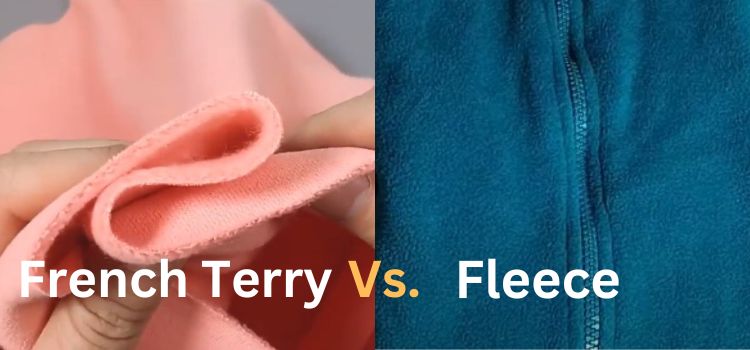
What is The Main Difference in Characteristics? French Terry vs Fleece
Both French terry and fleece fabrics are knit fabrics known for their warmth and pleasure, but they have a few major differences:
Fabric Construction:
French Terry is a knit fabric with loops on one side and a flat, smooth surface on the other and adds texture and allows for more air circulation and moisture absorption.
Fleece is a synthetic textile primarily made of polyester. It is unique by a fuzzy, raised surface on both sides, thought to be a brushing or napping process. This fuzzy texture traps air and acts as a powerful insulator.
Texture and Feel:
French Terry has a looped texture that lends it to appear slightly ribbed. The back is flat and smooth, soft and comfortable against the skin.
Fleece has a plush, soft, and fuzzy texture on both sides.
Warmth and Insulation:
Although French Terry is warm, it is not as insulating as fleece fabrics. It works best in mild to cool temperatures or as a layering fabric.
Fleece is well-known for its warmth and insulation. The fuzzy texture efficiently holds heat, making it a great fit for cold-weather clothing and outdoor activities.
Moisture Wicking:
Due to its looped surface, French Terry wicks away moisture much better than fleece fabrics. It is ideal for activewear and sportswear because of its ability to absorb and disperse dampness away from the skin.
Fleece does not wick away moisture like French terry fabrics.
Weight and Thickness:
French Terry arrives in several weights but is generally lighter and thinner than most fleece fabrics.
Fleece fabrics are thicker and heavier and add bulk and warmth.
Versatility:
French Terry can be an adjustable fabric suitable for clothing items like, casual wear, loungewear, and light activewear.
Fleece is great for cold-weather clothing, outdoor wear, and cozy blankets and throws.
French Terry has a looped texture, is better at wicking moisture, and is best for milder temperatures, whereas fleece has a fuzzy texture, gives great warmth, and is best for colder weather.

What is the Best use of French Terry fabrics?
French terry is an open fabric that allows the making of many different garments. The following are some of the best ways to use French terry fabrics:
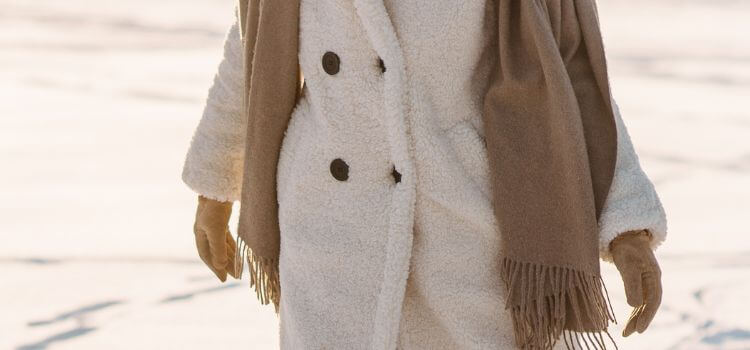
What is the Best use of Fleece fabrics?
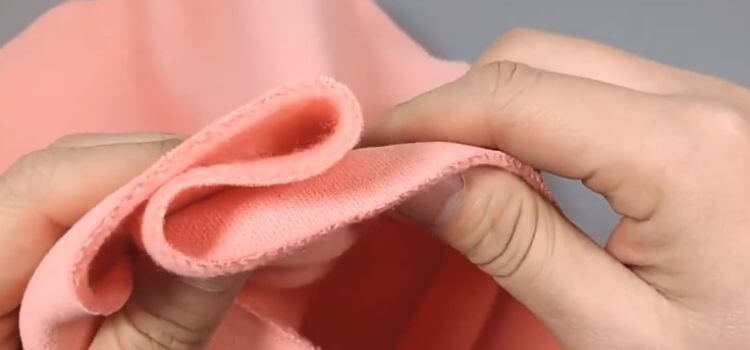
What Is French Terry?
French Terry is a favored and trendy fabric. Because of its special features and soft feel, this flexible material has become a standard item in many wardrobes.
So, exactly what is French Terry? It is a knitted fabric with loops and soft piles of yarn on one side and smooth and flat on another side. Its structure gives it an exclusive texture that defines it from standard jersey fabric. The inside loops create a soft, plush feel against the skin, making it very comfy and suitable for all seasons.
The various uses of French Terry are one of the main reasons for its increasing use. You will find it in sweatshirts, hoodies, joggers, dresses, and accessories. Whether going to the gym or relaxing at home, French Terry gives you an amazing combination of style and comfort-fit.
It allows for air circulation and keeps you dry during workouts. Additionally, the breathability of French Terry keeps you comfortable throughout the day.
French Terry is a fantastic fabric that combines style and performance. Its soft texture, moisture-wicking properties, and versatility make it a favorite for fashionable people worldwide.
So, the next time you’re looking for an ideal mix of comfort-fit and style, keep French Terry in mind as your new go-to fabric!
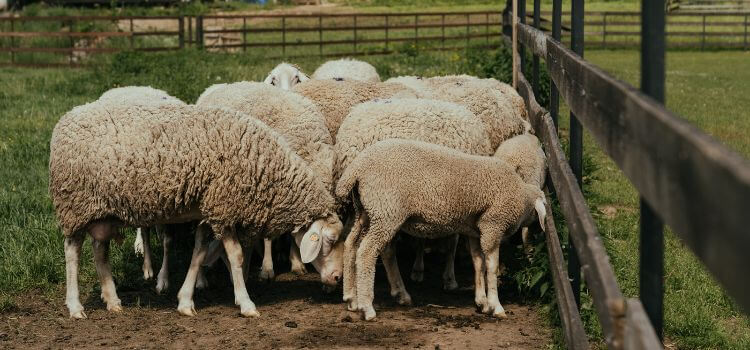
What Is Fleece?
Fleece is a favored fabric for every winter wardrobe. As a long-time user of fleece clothing, I can attest to its unrivaled warmth and comfort.
What is fleece, exactly? It is a soft, fuzzy fabric made of synthetic fibers, mostly polyester. Brushing the fibers creates a napped, fluffy appearance that resembles the texture of sheep’s wool during manufacturing. This one-of-a-kind design traps body heat, providing great protection against the cold.
One of my favorite aspects of fleece is it’s lightweight. Unlike heavy wool or bulky coats, It keeps you warm without being heavy. It’s the ideal companion for any winter adventure.
From cozy pullovers and zip-up jackets to fuzzy blankets and winter accessories, there’s a fleece option for everyone. Its flexible fabric adds a touch of stylish comfort-fit to any outfit.
Fleece is easy to care for, making it ideal for people constantly on the go. It is machine washable and dries quickly, maintaining its softness and shape even after multiple washes.
Its softness, lightweight warmth, and ease of care make it an unbeatable winter choice.
Make fleece your winter wardrobe’s greatest asset, whether you’re a nature lover or prefer to stay warm indoors. You will not be sad.
The Overall Comparison of French Terry And Fleece
French Terry vs Fleece:
French terry and fleece are both soft and comfortable fabrics for casual clothing. However, the two have major differences.
Cotton to make French terry, while polyester to make fleece. French terry is a lighter-weight fabric that makes it more breathable than fleece. French terry has a soft, plush texture with loops on one side, whereas fleece fabric has a fuzzy texture with a brushed surface on one side.
French terry is the best choice for activewear because it wicks moisture and keeps you cool and dry. Fleece is ideal for cold-weather clothing because it is warm and keeps you comfortable.
French terry is often pricey instead of a fleece in terms of price. However, due to the quality of the fabric, the price difference may not be a major issue.
Here’s a comparison table of French terry vs Fleece.
| Feature | French Terry | Fleece |
| Composition | Usually made of cotton, but can also be blended with other fibers such as polyester, spandex, or rayon. | Typically made of polyester, but can also be blended with other fibers such as cotton, wool, or acrylic. |
| Weight | Lighter weight. | Heavier weight. |
| Texture | Soft, plush fabric with loops on one side. | Soft, fuzzy fabric with brushed surface on one side. |
| Breathability | More breathable than fleece. | Less breathable than French terry. |
| Moisture-Wicking | Good moisture-wicking properties. | Not as good moisture-wicking properties as French terry. |
| Warmth | Not as warm as fleece. | Warmer than French terry. |
| Durability | Durable and can withstand repeated washings. | Durable and can withstand repeated washings. |
| Price | More expensive than fleece. | Less expensive than French terry. |
| Pilling | Less prone to pilling. | More prone to pilling. |
| Shrinkage | May shrink up to 5% in the first wash. | May shrink up to 3% in the first wash. |
| Static cling | Less prone to static cling. | More prone to static cling. |
| Uses | Often used for sweatshirts, hoodies, sweatpants, and other casual clothing. | Often used for blankets, jackets, hats, and other cold-weather wear. |
| Benefits | Soft, comfortable, breathable, moisture-wicking, and durable. | Warm, durable, and less expensive. |
| Drawbacks | Not as warm as fleece, more expensive, and more prone to pilling. | Not as breathable as French terry may shrink, and more prone to static cling. |
The best fabric for you will be set by what is most important to you. French terry is a good decision if you want a soft, comfortable fabric that is also breathable and moisture-wicking. Fleece is a good option if you want a warm, durable that is less expensive.
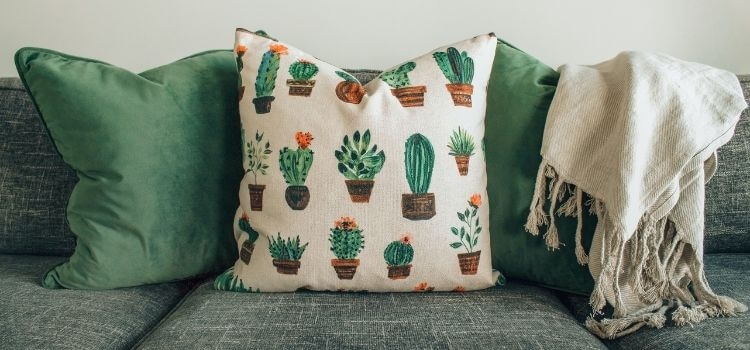
What are the alternatives to French Terry garments?
French Terry’s versatility extends beyond garments, with applications in lots of non-apparel products. Some common alternatives to French Terry garments include
Home Textiles:
Towels, bathrobes, and bath mats come from French Terry. Its soft and absorbent properties make it ideal for these products, which provide comfort and functionality in the bathroom.
Bedding and Linens:
French Terry can be found in bedding items such as mattress protectors and mattress toppers, adding a second layer of rebound and defense.
Home Decor:
French Terry serves decorative items such as throw blankets and decorative pillows, which add a cozy touch to home interior decor.
Pet Bedding:
French Terry, like fleece, is commonly used in pet beds and blankets that offer comfort and extra warmth to pets.
Cleaning Cloths:
French Terry’s texture and absorbed energy make it great for cleaning pads and wipes used for household cleaning.
Baby Products:
French Terry appears in baby products such as bibs, burp cloths, and changing pads for its comfy and soft surface for babies.
Sports Accessories:
Absorbs moisture and keeps the wearer dry during sporty activities, used in sports accessories like sweatbands, wristbands, and headbands.
Toweling Products:
Because of its absorbing properties, French Terry is used in many toweling products, including beach towels and sports towels.
Travel Accessories:
French Terry is available in travel accessories such as neck pillows and eye masks for added comfort.
Spa and Wellness Products:
French Terry appears in spa robes and slippers for its softness and absorbency, improving the spa experience.
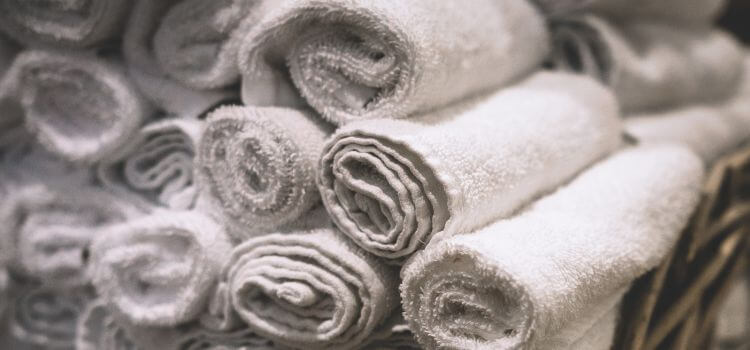
The flexibility of French Terry allows it to be utilized across a wide range of non-apparel products, improving ease and utility in many facets of daily life. Its softness, absorbency, and cozy feel make it an ideal option for many types of uses other than clothing.

What are the alternatives to fleece garments?
Fleece has plenty of useful and creative uses in many industries and applications. Among the most common non-garment applications:
Blankets and Throws:
Fleece is a fashionable material for cozy and warm blankets and throws. Its softness and insulating qualities make it ideal and give warmth on cold nights.
Bedding:
Fleece sometimes serves as a covering or an extra layer in bedding items such as mattress protectors, mattress toppers, and pillowcases to add softness and warmth.
Pet Bedding:
Known for its softness and ability to provide warmth, and mostly used in pet beds and pet blankets.
Upholstery and Home Decor:
Fleece is easily applied as a covering for furniture, cushions, and pillows, adding a touch of coziness and style to the room’s design.
Outdoor Gear:
Fleece is widely used in outdoor gear like backpacks, sleeping bags, and camping blankets as it offers lightweight warmth and helps in moisture management.
Cleaning and Polishing Cloths:
As fleece is soft and non-abrasive, it is used as a material for cleaning and polishing cloths because it effectively captures dust and particles without scratching surfaces.
Industrial Applications:
Due to its lint-free and gentle qualities, fleece is used in some industrial settings, wiping or cleaning sensitive equipment and surfaces.
Baby Products:
Fleece is frequently used in baby blankets, swaddles, and wraps to provide a gentle and relaxing space for little ones.
Car Accessories:
Fleece is used in car accessories such as seat covers, steering wheel covers, and car blankets to provide a warm and friendly feel inside the vehicle.
Craft and DIY Projects:
Since its ease of use and wide range of available colors and patterns, crafters use fleece for multiple DIY projects as making stuffed toys, pet accessories, and decorative items.
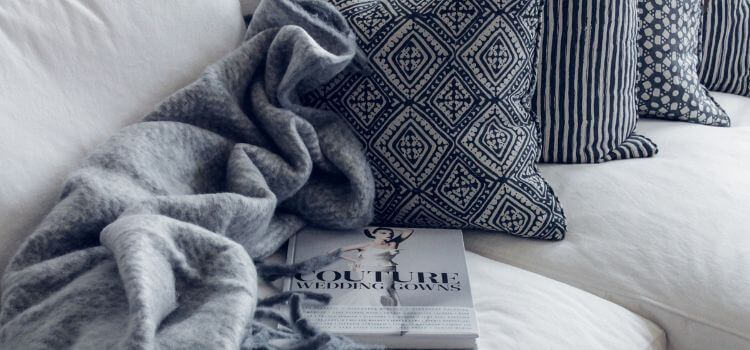
Fleece’s versatility, softness, and insulating properties make it a valuable material with numerous applications outside of garments, enhancing comfort fit, and functionality in many aspects of daily life.
Which is Good for Winter French Terry vs Fleece?
Warm, comfortable materials that are trendy in the winter are fleece and French Terry. However, depending on your needs, some significant differences between the two fabrics that might favor one over the other.
French Terry usually comes from cotton, whereas fleece comes from polyester. French Terry is lighter in weight and more breathable than fleece. Fleece fabric has a soft, fuzzy texture with a brushed surface on one side, french terry has a soft, plush texture with loops on one side.
French terry is a good material for athletic clothing because it draws moisture away from the body and keeps you dry.
French Terry and fleece are appropriate for winter clothing, but each has unique qualities that suit various tastes and requirements.
Let’s compare French Terry and fleece in terms of their suitability for winter:
Moisture Wicking Performance:
French Terry:
The material can somewhat wick moisture, but it might not be as good at keeping you dry during strenuous physical activity.
Fleece:
Fleece is normally more moisture-wicking, making it better suited for activities that could result in sweating.
Warmth:
French Terry:
Provide good warmth, but it might not be as insulating as fleece.
Fleece:
Better insulation in cold weather offers by its outstanding warmth retention.
Softness:
French Terry:
Create a smooth and pleasant appearance against the surface of the body.
Fleece:
A quality that makes it cozy and enjoyable to wear is its softness.
Stretch:
French Terry:
Deliver flexibility during movement and typically has a good amount of stretch.
Fleece:
Have some stretch but generally not as much as French terry.
Usage:
French Terry:
Fit for daily use, informal outings, and easy physical activity.
Fleece:
Perfect for outdoor activities, sports, hiking, and also as a middle layer in colder climates.
Durability:
French Terry:
Sufficient for routine use, but over time may begin to show signs of wear.
Fleece:
More resilient, stronger, and able to withstand repeated washings and rougher use.
Weight:
French Terry:
Compared to fleece, heavier.
Fleece:
Light and simple to layer.
Cost:
French Terry:
Frequently less expensive than fleece.
Fleece:
Due to its superior warmth and performance qualities, it may be somewhat more expensive.
Easy Care:
Fleece and French Terry are equally machine washable and reasonably simple to maintain. However, specific care guidelines may differ based on the brand and material.
Fleece is a better option for winter clothing if you value warmth, durability, and moisture-wicking capabilities. French terry might be a good choice if you prefer a soft, stretchy, and more affordable option for daily wear.
What are the benefits and drawbacks of French terry?
French terry fabric has the following benefits and drawbacks:
Benefits
Drawbacks
French terry is a well-liked, adaptable material renowned for being soft, comfortable, and breathable. It works well for many uses, such as loungewear, activewear, and casual attire.
What are the advantages and disadvantages of fleece?
Advantages
Disadvantages
A comfortable and adaptable material, fleece is perfect for many applications. Since it is warm, soft, breathable, and simple to care for, it makes best for outdoor clothing.
Which Is Better: Fleece or French Terry?
Sweatshirts, sweatpants, and other casual clothing come from French terry and fleece, two warm, soft fabrics. The two fabrics do differ in some significant ways, though.
Compared to French terry, fleece is a heavier fabric. Fleece’s surface is soft, napped, and made from polyester or polyester and cotton blend. Winter clothing frequently uses fleece because it is so warm. In addition, it is inexpensive and simple to maintain.
Compared to fleece, French terry is a softer fabric. It has a smooth, brushed surface on one side and a looped surface on the other and comes from cotton or a cotton and polyester blend. French terry is a good option for all-season clothing because it is more breathable than fleece. In addition, it is more resilient than fleece and can withstand repeated washings.
French Terry vs Fleece – Which is The Best For You?
The decision to choose what is best for you comes first.
Fleece is an ideal choice if you’re looking for a warm, comfortable material that is affordable and simple to maintain.
French terry is the better option if you’re looking for a breathable, robust, and wearable for a long time.
Factors to take into account when deciding between fleece and French terry include the following:
Activity level:
Fleece is the better option if you are a person of energy who needs to stay warm and dry. French terry might not be the best fabric for demanding activities because it is less effective at wicking away moisture.
Climate:
Fleece is an appropriate choice if you live in a cold area. French terry is an ideal choice for all-season clothing.
Personal preference:
Try both and decide which you prefer.
French terry is a good option if you’re looking for a summer-friendly fabric that is lightweight, breathable, and moisture-wicking. Fleece is a good option if you’re looking for a warm, plush, and long-lasting fabric.
French Terry vs Other Fabrics
Here are some additional fabric types that differ from French Terry.
French Terry vs Velour:
Soft, cozy fabrics include French Terry and Velour. French Terry is perfect for athletic wear and towels because of its absorbent qualities and looped texture. The luxurious velour fabric is for loungewear because of its short, dense pile.
French Terry vs Cotton:
French Terry is a specific fabric, whereas cotton is a natural fiber. French Terry is widely employed for activewear and loungewear, whereas cotton is more flexible and found in many clothing items and home textiles.
French Terry vs Terry Cloth:
Fabrics with loops include French Terry and Terry Cloth. French Terry is less absorbent and has shorter loops. Terry cloth is perfect for towels and bathrobes because it is thicker and more absorbent. French Terry is perfect for loungewear and activewear because it is lighter and more relaxed.
Each fabric has distinct qualities that make it appropriate for many different uses. French Terry, Velour, Cotton, and Terry Cloth are the best fabrics for towels and bathrobes. Velour is best for plush clothing.
FAQs
French Terry Cotton: What is it?
French terry cotton is a supple, versatile fabric made from cotton yarns. It is smooth on the outside and has a soft looped pile on the inside. The fabric used in sweatshirts, sweatpants, and other loungewear is frequently French terry cotton. Additionally, it is a popular choice for home textiles like towels and blankets.
The advantages of French terry cotton include the following:
French terry cotton is a great choice if you’re looking for a soft, comfy, and long-lasting fabric for your clothing or home textiles.
French Terry vs Fleece Hoodie
The two most popular kinds of hoodies are fleece and French terry. Fleece hoodies are warmer and more robust, while French terry hoodies are typically softer and more comfortable.
French terry hoodies are a good choice for those looking for a hoodie with stretchy and moisture-wicking. Fleece hoodies are a good choice for those looking for a warm, cozy hoodie.
Which is warmer, fleece or terry cloth?
In general, terry cloth is cooler than fleece. This is because fleece has a thicker, plusher, softer fabric than other fabrics. Fleece retains heat better than terry cloth does, despite the fact that both are absorbent.
Does summertime French terry become too warm?
When it’s hot and humid outside, wearing French terry might get uncomfortable. French terry is a relatively thick fabric that does not breathe as materials like cotton or linen.
Which washing technique is best for French terry?
Cleaning advice for French terry includes washing it in cold water with a mild detergent. While tumble drying on low heat is an option for French terry, neither bleaching nor ironing is required.
Does Terry fabric include polyester?
Terry cloth comes from cotton, polyester, or blends of the two. Polyester terry cloth is frequently more durable and wrinkle-resistant than cotton terry cloth. It is less absorbent and may feel hotter to wear.
Can fleece wick away moisture?
Cotton can absorb more moisture than fleece, despite fleece’s ability to absorb some moisture. This is true because fleece, a synthetic fabric, is made from polyester. Polyester is a hydrophobic material.
Why is that fabric called French terry?
Because it first came in France in the early 1900s, French terry is also known as that. French terry is from a special kind of cotton yarn twisted in a specific way to create the recognizable looped pile.
What happens when you’re wet and wearing fleece?
If you’re wet and wearing fleece, you might feel cold. Because cotton absorbs more moisture than fleece does, this is the case. Water that soaks up from your body will move into the fleece when wet. You might experience a chill and clammy feeling as a result.
Can you stay warm in the winter wearing fleece?
In the winter, fleece can indeed keep you warm. Because it is an excellent insulator, fleece traps heat. In cold weather, this may keep you warm.
What defines Jersey from French Terry?
French terry and jersey are two textiles made from cotton yarn. They do, however, have unique features and feelings. French terry has a smooth, flat exterior and a soft, looped pile on the inside. French terry is thicker and warmer than Jersey.
Conclusion
The competition between French Terry and fleece has unique advantages that make them suitable for various styles and events.
If you consider a plush, soft feel with excellent insulation for colder weather, fleece might be the best selection. Fleece is a popular material for winter clothing, blankets, and outerwear. It is a dependable option for outdoor activities and sports in chilly weather because of the synthetic construction’s quick-drying properties.
French Terry might be the best choice if you’re looking for a versatile fabric with a balance of relaxation, breathability, and moisture-wicking qualities. French Terry has a unique looped texture on one side that gives it a fashionable appearance and improves airflow and moisture absorption. It is a fantastic option for loungewear, activewear, and casual clothing, especially in milder climates.
Consider your preferences for comfort, lifestyle, and climate when investing. Fleece might be your first choice if you need a comfortable experience during the colder months. French Terry can be the best option if you value a soft, versatile fabric for many situations and climates.

